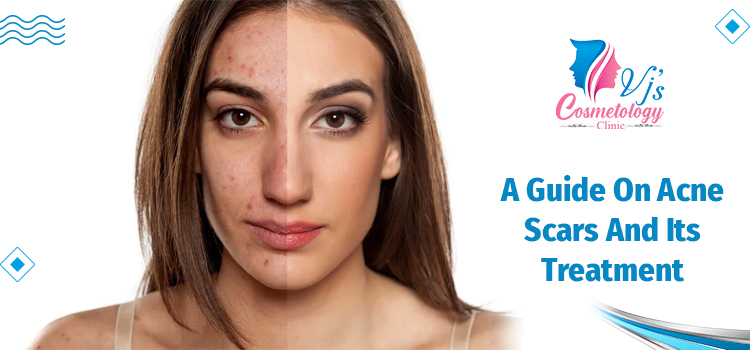Pimple breakout is heartbreaking, but the worst is the acne marks it leaves behind. It is like a parting gift that nobody wanted.
No matter how much you detest them, you can not ignore them. They are very common and happen a lot more than you might think. If you are dealing with pimple breakouts, it is evident that you will come across acne scars.
In this blog, we will tell you everything about pimple marks and how you can remove them with the help of a Cosmetic Surgeon in Vizag.
What Are Acne Scars?
You can define pimples as permanent textural indentations and changes. They grow on the skin because of the occurrence of severe acne.
However, you should observe that the term scarring does not indicate the red and brown temporary marks left after the recovery of the acne.
The formation of such scars happens when the huge puss-filled spaces, which are known as acne cysts, disrupt the tissues of the skin in an irreplaceable manner. Eventually, the cysts empty themselves, and the area heals; it starts leaving a deep scar behind on the face, tarnishing the whole skin and its texture. You can also notice scars on the back or chest. In such locations, the scars are technically lumpy, and the experts term them keloid or hypertrophic scarring.
What Are The Different Types Of Acne?
According to the professionals, they classified acne into two broader perspectives.
- Hypertrophic scars
They are basically lumpy or raised scars that usually grow on the back or the chest as the acne heals with time. These are those scars that rest above the surface of the surrounding skin. The reason behind such spots is excessive collagen at the time of recovery.
- Atrophic scars
They are also known as depressed scars. You will generally notice them on the face. Unlike hypertrophic scars, these scars sit below the surfacing level of the skin or surrounding the skin. The formation of such acne happens due to the production of insufficient college at the time of wound healing.
The experts further divide atrophic scars into three categories such as:
Boxcar
They are generally U-shaped, wide, shallow, and deep scars with sharp edges. However, remember that the shallower the scars, the better it will be for them to respond to the skin resurfacing treatments.
- Ice pick
They are typically V-shaped and narrow marks that happen to go deep into the skin. According to the experts, they are classified as one of the most challenging scars to treat because of their capabilities to extend far under the skin’s surface.
- Rolling
These are those scars that you can identify as a wide depression. It also has irregular, round edges with rolling appearances.


